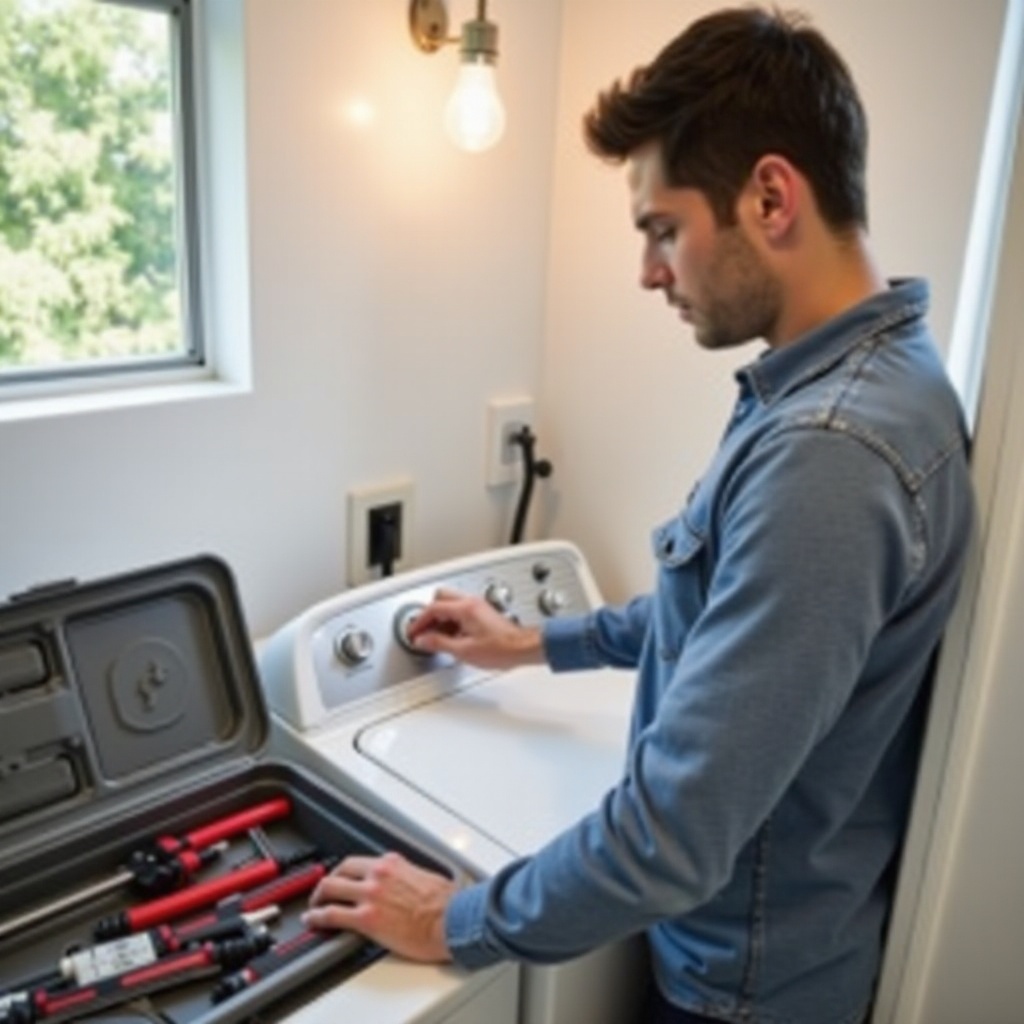Introduction
Dryers are a convenient addition to any home, significantly reducing the effort involved in drying laundry. When a dryer stops heating, it can disrupt your routine and create unnecessary stress. To tackle this issue, it's essential to understand the basic workings of a dryer and the typical culprits behind heating failures. This guide will provide you with a comprehensive overview to diagnose and resolve the common problem of a dryer not heating.

Understanding How a Dryer Heats
To effectively troubleshoot, it's important to know how a dryer generates heat. The primary components involved include the heating element, the thermostat, and the thermal fuse. Each plays a critical role in ensuring that the dryer heats properly. The heating element warms the air, the thermostat regulates the temperature, and the thermal fuse acts as a safety mechanism against overheating.
Initial Safety Precautions
Safety should never be compromised when dealing with electrical appliances. Before starting any repairs, unplug the dryer and disconnect it from the power source to avoid any risk of electric shock. Wear protective gloves to safeguard your hands from potential cuts, and make sure your workspace is dry to prevent any moisture-related hazards.
Common Causes of Dryer Not Heating
If your dryer isn’t heating, there are several common causes to investigate.
Faulty Heating Element
The heating element is the core of the dryer's heating system. When it fails, the dryer won't generate the necessary heat to dry clothes. This component can fail due to wear and tear over time or due to a short circuit.
Malfunctioning Thermostat
A faulty thermostat can prevent a dryer from reaching the right temperature in the heating cycle, leading to clothes that remain damp. Testing this component ensures it triggers the heating element correctly.
Blown Thermal Fuse
The thermal fuse serves as a protective mechanism. If the dryer overheats, the fuse blows to safeguard other components. A blown thermal fuse disables the dryer’s heating function, usually due to clogged ventilation or lint buildup.
Step-by-Step Troubleshooting Guide
This section provides a detailed step-by-step process for troubleshooting common heating issues in dryers.
Checking the Power Supply
Ensure the dryer is properly connected to a functioning power outlet, and verify that the circuit breaker hasn't tripped. Faulty connections or power issues can prevent the dryer from heating up.Testing the Heating Element
- Disconnect the dryer from the power source.
- Access the heating element by removing the dryer's back panel.
Use a multimeter to check the continuity of the heating element. If there is no continuity, the element is faulty and must be replaced.
Inspecting and Replacing the Thermostat
- Locate the thermostat near the dryer drum.
- Test its functionality with a multimeter to ensure it can accurately regulate temperature.
Replace the thermostat if it's malfunctioned.
Verifying and Replacing the Thermal Fuse
- Find the thermal fuse attached to the blower housing or exhaust duct.
- Check its continuity using a multimeter.
If the fuse is blown, replace it and check for ventilation blockages to prevent future occurrences.
Ensuring the Dryer Ventilation Is Clear
- Regularly clean the lint filter to maintain proper airflow.
- Inspect and unclog the dryer vent to ensure effective venting and avoid overheating.
Regular maintenance and inspection of these components can prevent most heating issues.
Addressing Additional Issues
If your dryer continues to face heating problems despite the checks above, it might be due to less common components like the control board or sensors.
Control Board Malfunctions
A malfunctioning control board may affect the dryer's heating commands. This requires checking for visible signs of damage, such as burnt-looking parts, and considering board replacement if necessary.
Timer and Sensor Checks
Defective timers or sensors can also cause heating issues. Ensure these parts are functioning correctly and replace any that aren't operating as expected.
When these additional checks are complete and issues addressed, your dryer should resume efficient operation.

When to Call a Professional
If you've tried all the above methods and your dryer still isn't heating, it may be time to seek professional help. More complex issues like motor problems or extensive electrical failures require the expertise of a technician. Professionals have the tools and knowledge to handle intricate repairs safely and effectively.

Conclusion
Fixing a dryer that won't heat doesn't have to be intimidating. With a systematic approach, you can diagnose and resolve most issues yourself. Regular maintenance like cleaning the lint filter and ensuring clear vents can prevent common problems and prolong your dryer's life. This guide empowers you to tackle such issues confidently and efficiently.
Frequently Asked Questions
How often should I clean my dryer vent?
It's recommended to clean the dryer vent at least once a year. For heavy usage, consider cleaning every six months to maintain efficiency.
What are the signs that my dryer needs professional repair?
Persistent problems like strange noises, clothes taking too long to dry, or the dryer stopping mid-cycle indicate professional service is needed.
Can overloading cause my dryer not to heat?
Yes, overloading can restrict airflow, causing overheating and blowing the thermal fuse, which stops heating. Avoid overloading to maintain performance.
